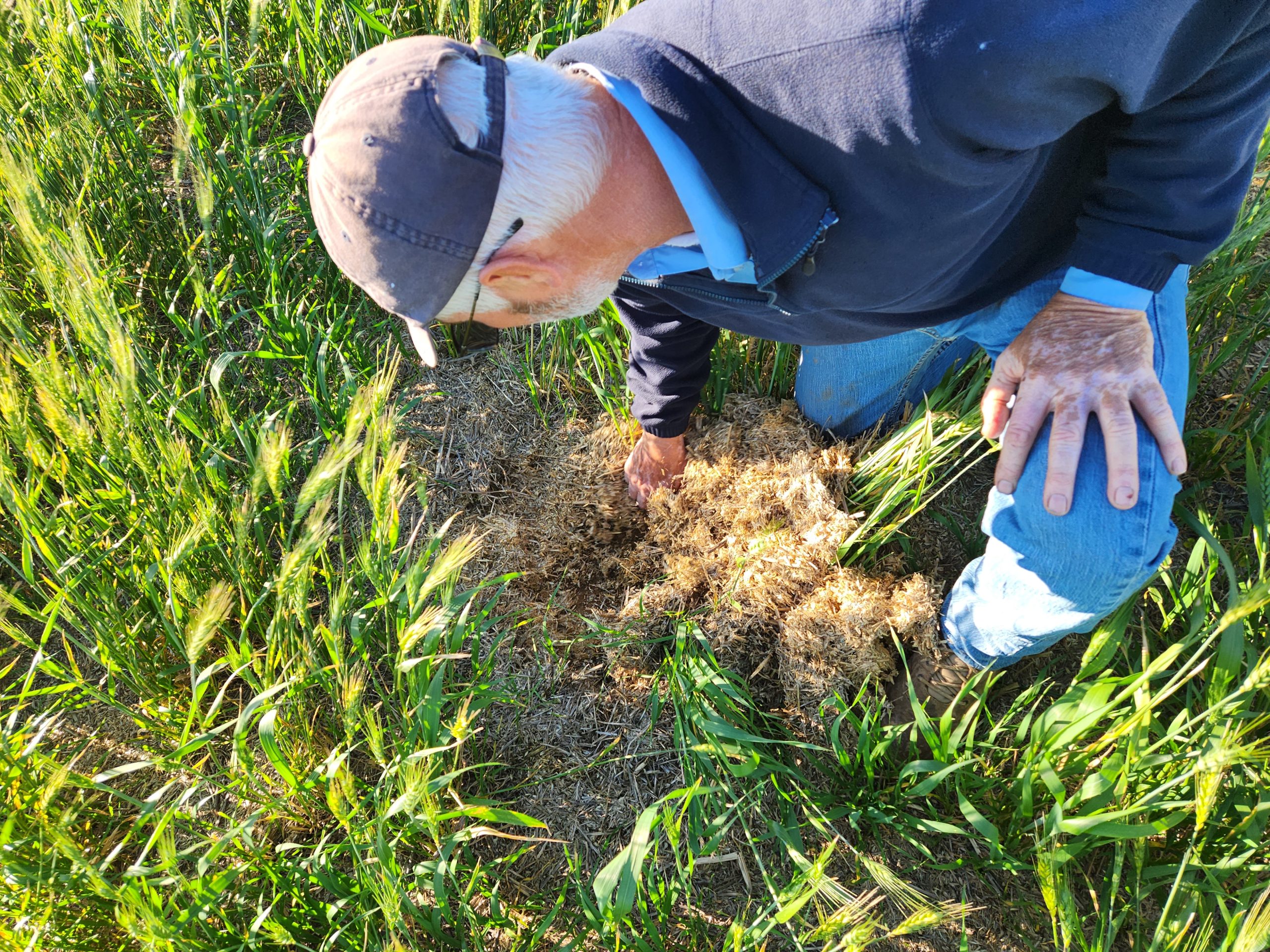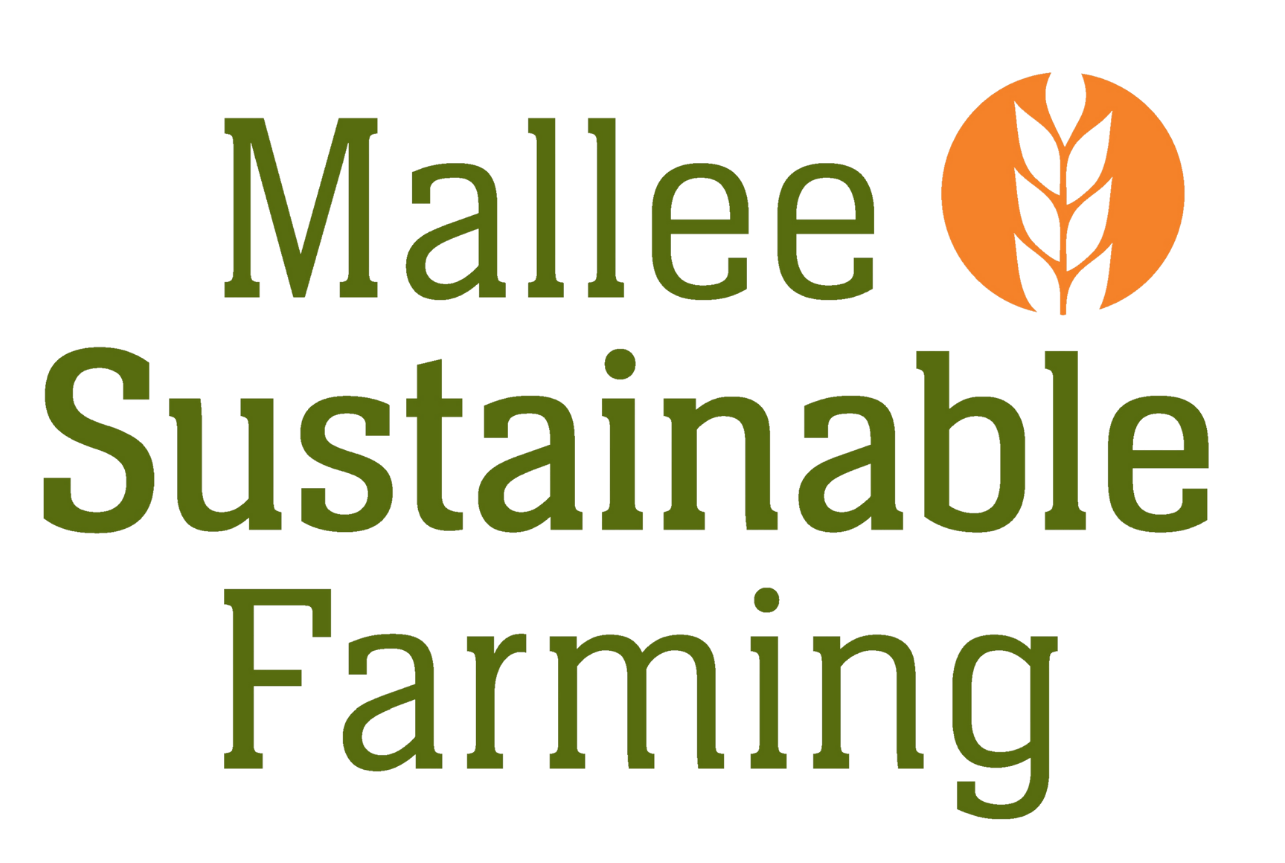
In our latest podcast episode, developed as part of the Future Drought Fund project ‘Building resilience to drought with landscape scale remediation of saline land,’ we had the opportunity to speak with Bruce Heddle, a farmer near Minnipa. Bruce shared his experiences and insights on an innovative method to manage dry saline soils using chaff heaps as mulch to re-establish cover and promote crop growth.
The Challenge of Saline Soils

Although these patches represent a small proportion of the farm, they pose significant challenges to crop growth and soil health.
Innovative Use of Chaff Heaps
To address these saline patches, Bruce implemented a unique strategy: spreading chaff heaps as mulch. This method was born out of necessity due to his harvest weed management system, which accumulates a substantial supply of chaff each year. After observing the positive impact of dumping chaff heaps on saline areas, Bruce decided to scale up the practice. He spread approximately 25 tonnes of chaff per hectare over the affected areas.
While the initial crop establishment and growth were not perfectly even, Bruce noticed a marked improvement in growth and cover across the entire area. The chaff mulch created a protective layer, promoting better seedling germination and growth by mitigating surface salinity.
Economic and Practical Considerations
Applying chaff heaps as mulch is not without its costs. Bruce estimates that the cost could be up to $800 per hectare. However, given the long-term benefits and the improvement in previously barren areas, he believes the economics are favourable for reasonably decent land. The key to this approach is having access to sufficient chaff, which Bruce’s farming system fortunately provides.
Results and Future Outlook
The results of Bruce’s trials have been encouraging. Areas where chaff mulch was applied have shown significant crop growth and soil cover, even in previously patchy saline spots. The chaff provides organic matter and cover, reducing evaporation and preventing capillary rise, which otherwise brings salts to the soil surface.
Managing grazing is also a crucial aspect of this strategy. Bruce noted that the treated paddock would likely be kept almost sheep-free to prevent the soil from being bared out over the summer, which would otherwise reintroduce salts to the surface.
Bruce Heddle’s experience with using chaff heaps as mulch demonstrates a promising method for managing dry saline soils. By improving soil health and promoting crop growth, this innovative approach offers a practical solution to a challenging problem. As Bruce continues to monitor and refine this method, his insights provide valuable lessons for other farmers facing similar issues.

For more info head to the MSF FarmTalk podcast for Bruce Heddle’s interview with Chris McDonough, click here
This case study was developed as part of the “Building resilience to drought with landscape scale remediation of saline land” project through funding from the Australian Government’s Future Drought Fund.











